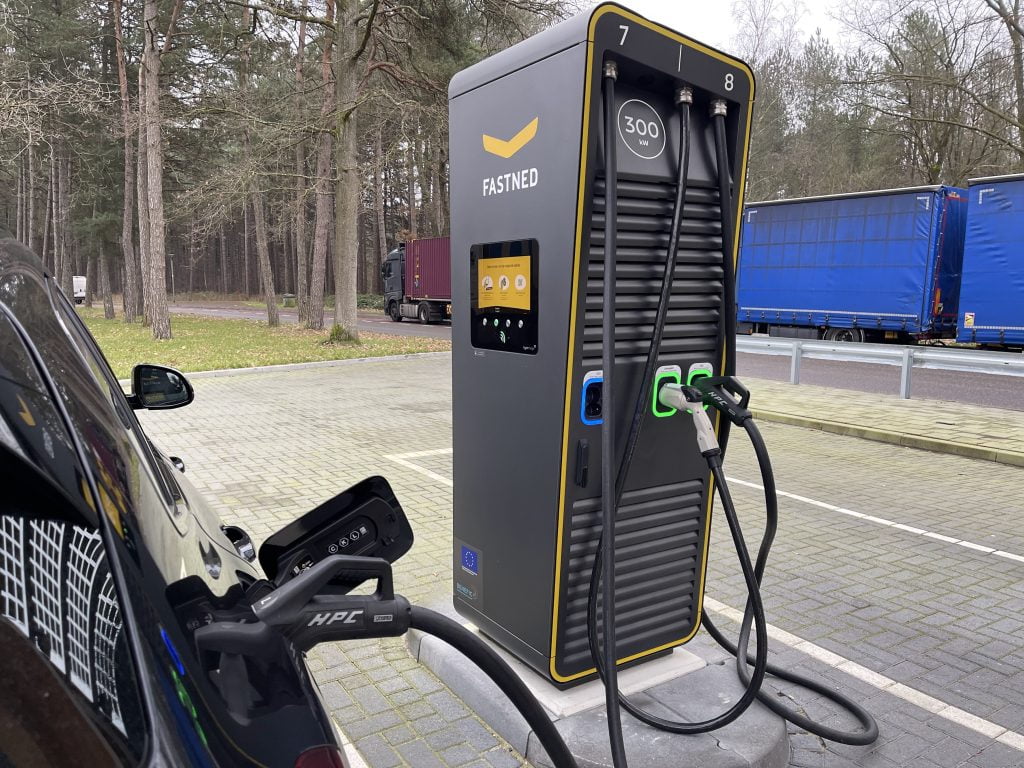On the road with Harry about the reality of electric student transport.
On a typical working day we meet Harry, an experienced driver from the Willemsende Koning transport company, while he is charging his electric van at De Somp along the A50. With more than 30 years of experience in the profession, Harry shares his insights on the challenges and changes in student transport as the switch to electric vehicles becomes more common.
Harry says about the future of electric student transport: “It is a good development, especially with a view to sustainability. But it does require a new way of working and thinking, both for drivers and planners. It is a learning process for all of us.”
rural areas
Harry, who mainly drives in rural areas, emphasizes the long journeys that many students have to make. Electric driving comes with unique challenges, such as the fear of coming to a stop on the side of the road with children on board. Finding suitable drivers for school transport is also becoming increasingly difficult, partly because it concerns a specific target group that cannot be served by everyone with a driver's license.
Despite the often negative image surrounding the students he transports, Harry speaks positively about his experiences and the employer. Incidents are rare and overall he enjoys the rides. He is fortunate to be able to use FastNed's fast chargers thanks to an exemption from his employer. However, this is not for all drivers. With current electricity rates, charging at home is not an option for Harry, making scheduling charging times a constant concern.
"The planners sometimes think that it is just like with diesel buses, but that is not the case. You cannot simply plan extra trips without taking the charging time and range into account. That really needs to be improved," Harry emphasizes. He says that he has to communicate regularly with the control center about the feasibility of certain routes and timetables."

"Electric driving is really a transition, both for us drivers and for the company. We have to be constantly aware of our range and the availability of charging points." He explains that although he finds the transition to electric driving generally positive, the planning team sometimes still has to get used to the limitations and possibilities of electric vehicles.
He emphasizes that electric driving is becoming increasingly normal, but is careful not to come to a standstill. The charging time en route can be up to 45 minutes, which means that it has to be charged regularly, especially because the planners do not sufficiently take the range of the van into account.
Harry also talks about the interaction with the students: “You really build a bond with the children. Yes, there are days when it is a bit more challenging, but overall they are just fun rides. You see them grow and develop, but you have to know what to do and how to deal with children with disabilities.”
transition
His story illustrates the transition to electric transport in the sector and the impact it has on daily operations. From planning challenges to ensuring student safety, electric student transportation is a changing world. It is indeed valuable to highlight Harry, a name we chose for our article,'s experiences, because they offer a different perspective on the transition to electric student transport. His story shows the practical realities and challenges drivers face in transitioning to more sustainable transportation methods.
Perhaps our readers will gain a deeper insight into both the positive and challenging aspects of this change in the industry and the beautiful profession of taxi driver in student transport. If you want to start working as a taxi driver yourself, take a look at the available positions vacancies at the transport company Willemsen- the King. Every day they transport thousands of children throughout the Netherlands to and from their school. These students do not live within walking or cycling distance of their school, or public transport is not an option for them. That is why student transport has been created to and from regular or special education, where the children feel comfortable and can develop optimally.
Illustrative photo: Willemsen-de Koning



